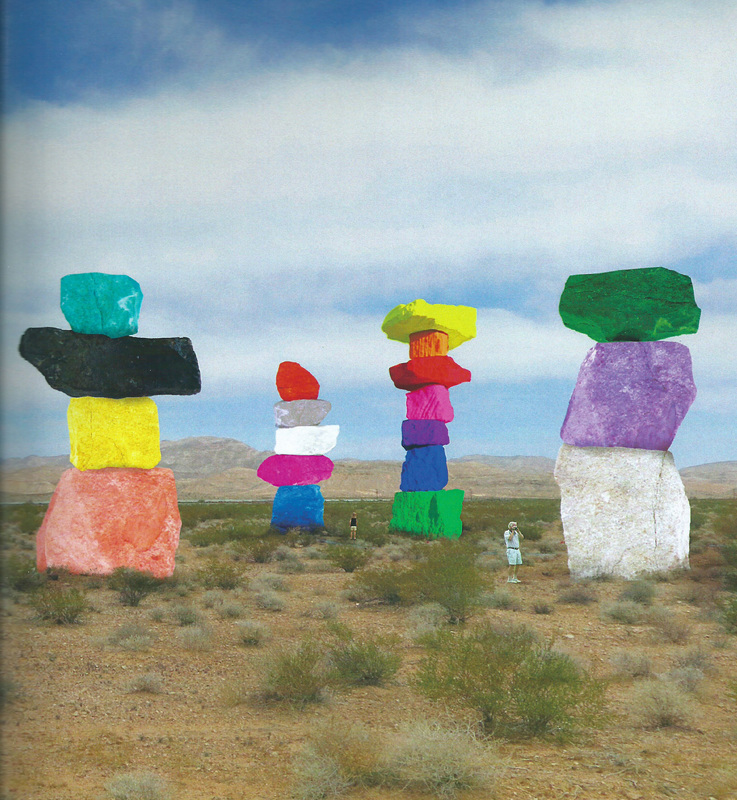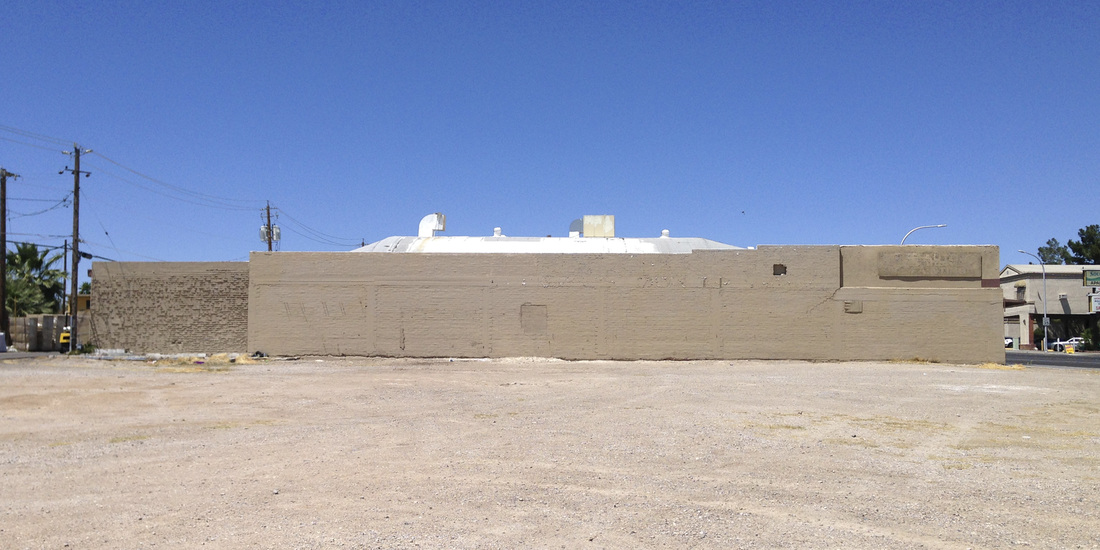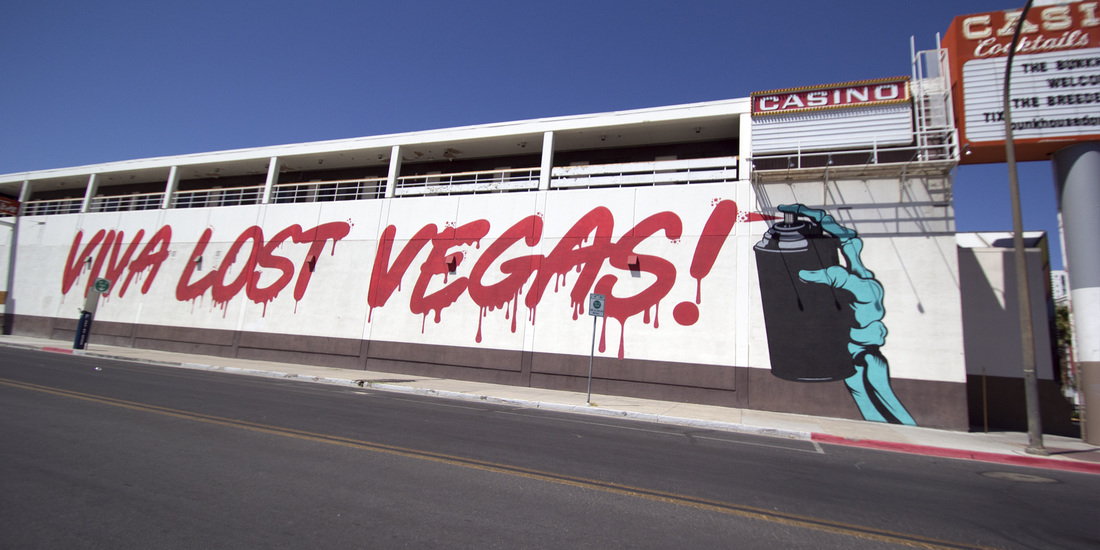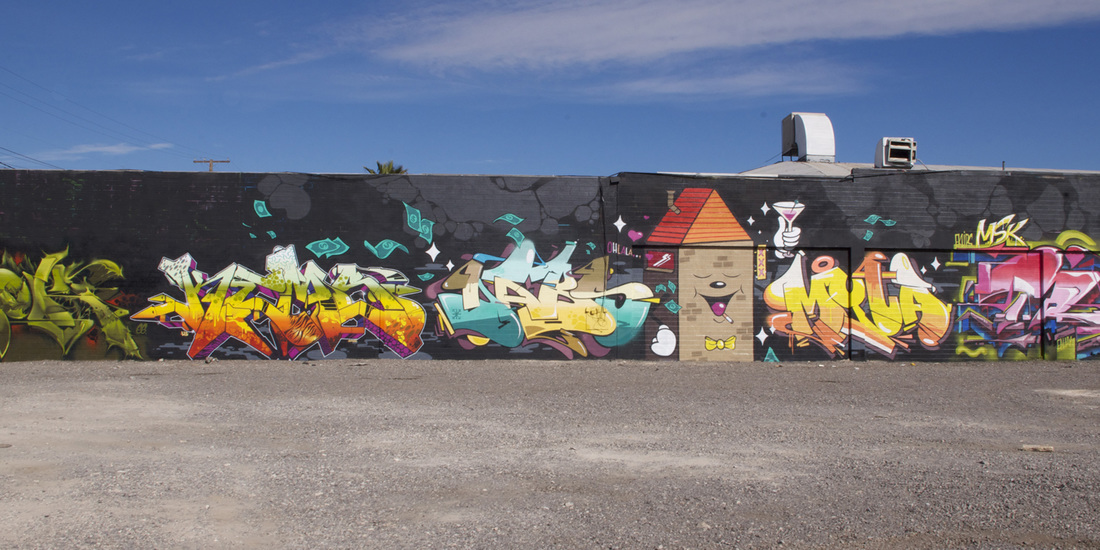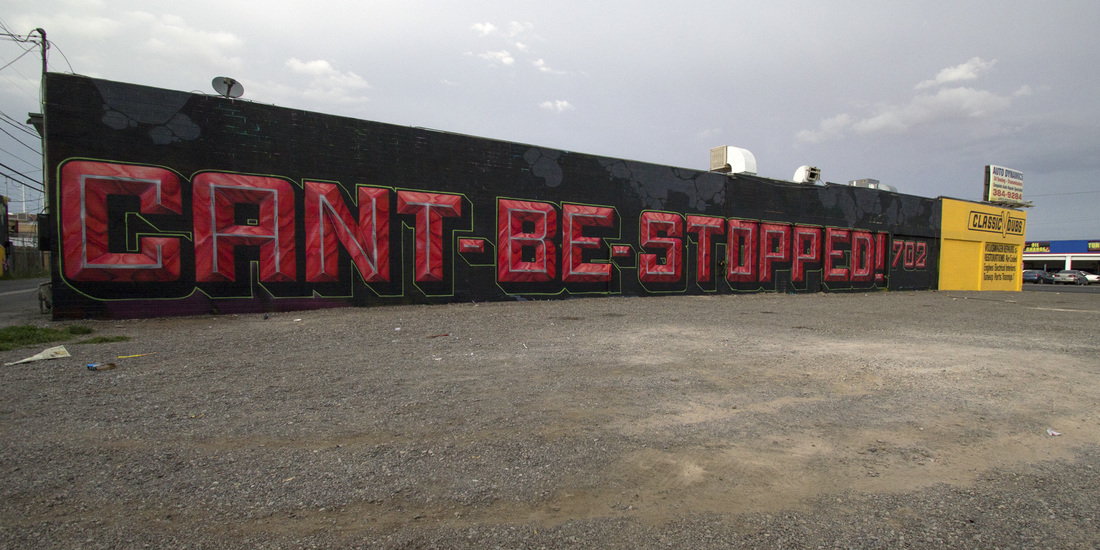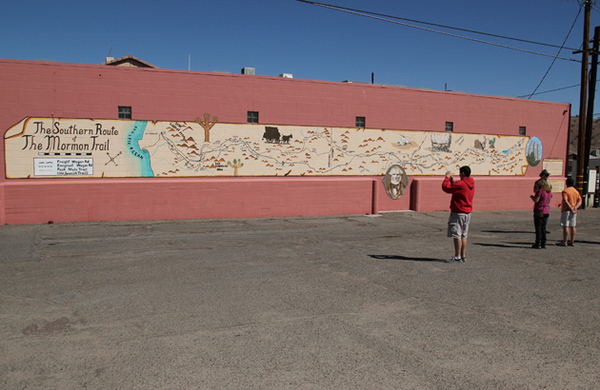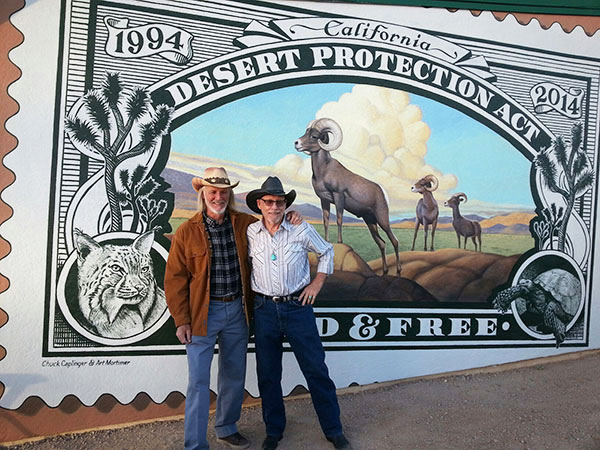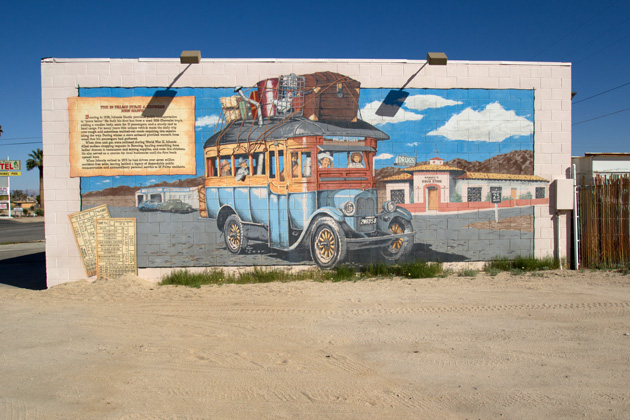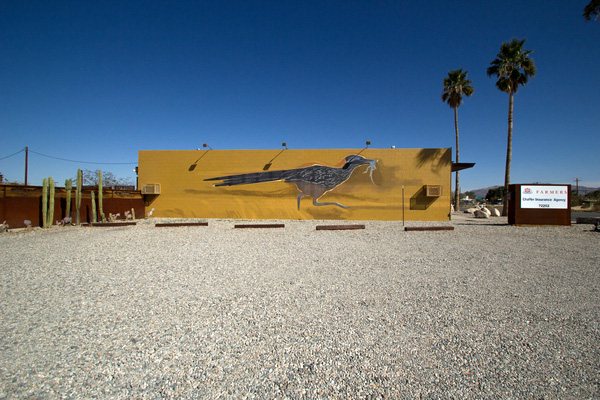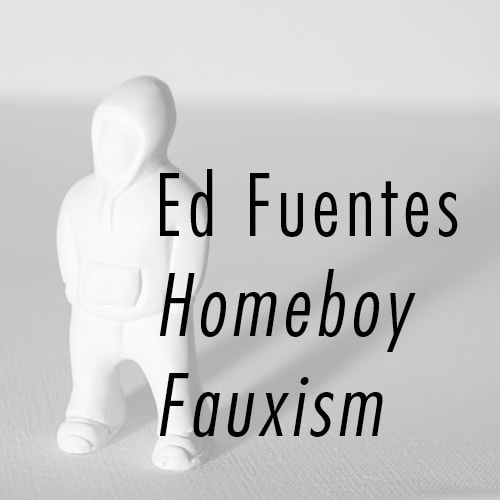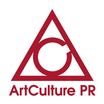|
Four of the proposed "Seven Magic Mountains." Artist rendering by Ugo Rondinone. Ugo Rondinone will color the landscape with artificial stones near Jean Dry Lake, said Amanda Horn, director of communications for Nevada Museum of Art in Reno. The large-scale public art is titled “Seven Magic Mountains” and a collaboration with Art Production Fund and NMA. It scheduled for viewing in early 2016. More from an early press release: The project will feature seven massive dayglow totems of painted stones along Interstate 15, which connects Los Angeles to Las Vegas, and will be on view for two years. The artificial stones, which will be visible for many miles in the flat desert landscape, offer a contemporary critique of the simulacra of destinations like Las Vegas. “ ‘Seven Magic Mountains’ elicits continuities and solidarities between human and nature, artificial and natural, then and now,” said Rondione in the release. His seven twenty-five foot high towers will be the first earthwork completed in over 40 years and works as an homage to Nevada's art history of land art and earthwork aesthetic. "Made of artificial stone and painted DayGlo colors, Rondinone’s totems are slated for installation on Bureau of Land Management property in early 2016. They are not the originally proposed mountains made of piled boulders but will likely offer the same wallop of faux nature aggressively inserting itself into the landscape and forcing discussions about reality in the 21st century." LV Weekly (April 29) "Art In The Desert: Human Artificiality In The Natural Landscape" with Scott Dickensheets, Kristen Peterson, and Michele Quinn I KNPR (May 4) Blank wall on Fremont near 17th is waiting for a mural. FIELD NOTE: Something I thought about when in Twentynine Palms a year ago. Murals along the roadside next to empty parcels with clear slight lines shows how brash horizontal image under a big sky is the fixed form of the desert. That’s a clear distinction from the painted walls in the vertical urban space. In the desert, monumental emptiness frames the mural's image. D*Face in the Las Vegas Fremont District Dabs Myla brief January 2014 appearance in the 18b with All Chrome, YoungTrav, and MDPESQ. Same wall above just a few weeks later. Zio Ziegler for Life Is Beautiful in Las Vegas. Grococcyx californianus" by Chuck Caplinger in Twentynine Palms, California. The Southern Route of the Morman Trail by Kathy Fierro in Barstow, California.
Photo courtesy of Chuck Caplinger via Desert Art Studio. In November 2014, muralists Chuck Caplinger and Art Mortimer dedicated a new mural in Twentynine Palms honoring the 20th Anniversary of the California Desert Protection Act of 1994, according to Caplinger's website. "The mural honors the historic California Desert Protection Act (CDPA) of 1994, which enlarged and re-designated Joshua Tree and Death Valley national monuments as national parks, established the Mojave National Preserve, and designated 69 new BLM Wilderness Areas in the California Deserts Region." It's a new mural for the Marine town in the desert of San Bernardino County. They, like Barstow, California, and Elko, Nevada, use art to attract tourism. I call it the Rural Mural Movement. This is an edited version of my KCET post about Twentynine Palms from March 2014. Some desert cities in California attract tourism by painting their history on walls. It's a form of public art that has less to do with the mural traditions of urban Los Angeles. It comes from across the northern border. Twentynine Palms' public art program that at first glance I thought had a direct pedigree to the murals in Central California. I would have to also give a nod to the Chemainus Mural Project in Vancouver Island, B.C., Canada. By painting well-crafted monumental works that focus on local history, the Canadian mural program is credited a factor in its economic recovery of Chemainus. Karl Schutz authored the Chemainus movement, and has gone global with his teachings on how to seek walls, local stories, and funding for "first-class" artists to create a "Wow factor." When his Chemainus Mural Project was featured in a 1994 Smithsonian exhibition, the article was brought to the meeting of Twentynine Palms merchants, who were looking for ways to restore their own town. "Twentynine Palms' [program] really had no shortcomings," said Schutz. "They did it by the book and, in some cases -- unveiling ceremonies [for example] -- better than Chemainus." Murals number over 20, and the governing non-profit, The Action Council for 29 Palms, plan to mark the 20th Anniversary of their first mural, which was unceremoniously lost by development for a project that didn't get off the ground. Unveiled on November 19, 1994, that first mural, "In Memorium," told the story of early homesteader Bill Keys, and its loss taught the town to make sure that anyone promising to open up a store, and need to demolish a building, are aware of importance of these murals to locals. Over a cup of morning coffee, one Twentynine Palms mural program founder, Larry Briggs, quietly shook his head thinking of that lost piece, but perked up when he was asked if there were ideas in place for new works. Ray Kinsman, who helped pioneer the program, said they "learned a lot about east and west facing walls." Next to him was Wayne Winiecki, an artist who has helped keep the murals maintained with an energetic non-stop desert spirit. Of course, sometimes it seems getting a mural up is the easy part. Now funding has to be sought to keep the current portfolio vivid, and to restore lighting on the walls so they work as nighttime markers for those traveling through town. The town's murals, which include paintings by veterans Richard Wyatt, Art Mortimer, and John Pugh, are strong in craft, and conservative, as can be expected for a military town. Many of the early pieces were ritualistic on history of civic leaders. That may be of interest to travelers who explore region's history, but followers of murals in its contemporary form of street art may leave disappointed. Meetings were being planned to discuss if new styles of murals should be sought after, according to Cynthia Truitt, Executive Director of Twentynine Palms Chamber of Commerce. As she said that, tourists from Vancouver Island, near Chemainus, walked in the chamber lobby looking for information on the murals. What did they expect to be about, I asked. "Well, I think the [purpose of the] murals, that is to tell the story, the history of the town," said Eleanor Zimmerschied, in a playfully terse German accent. Those visitors will enjoy Tim O'Connor's 1997 mural about Johnnie Hastie, the town's first source of public transportation, with his first bus made from a used 1928 Chevrolet truck. Or Richard Wyatt's 1996 piece on Bill and Elizabeth Crozier Campbell, who became homesteaders, and found artifacts that made their way to the Southwest Museum of Los Angeles. How does she feel about contemporary street art? "Those modern ones? I'm not really for that," she said. "It just doesn't fit in." Johnnie Hastie & The 29 Palms Stage" is the story of Hastie's being the source of public transportation and courier until he retired in 1973 with over seven million accident-free miles. The 13 by 32 foot mural by Tim O'Connor was dedicated February 15, 1997. Photo: Ed Fuentes. "Grococcyx californianus" is the 60 by 15 foot mural of a desert roadrunner with a baby lizard in its mouth that greets you as you enter Twentynine Palms from the west. Painted by local artist Chuck Caplinger, it replaced a piece by Action29 that suffered some damage. This was commissioned by the operators of the Smoketree Building, and while the style is different, it has its own "wow" factor. The other side has a mature lizard, which so far has avoided being on a roadrunner's menu. Photo: Ed Fuentes. Original Post I KCET
|
An Online Arts Journal
Exhibition:
February 2 – March 31, 2019 Artist Reception and Gallery Talk: Sunday, February 10, 2019, 4 p.m.–7 p.m. S P O N S O R
ARCHIVES
January 2019
TAGS
All
|
